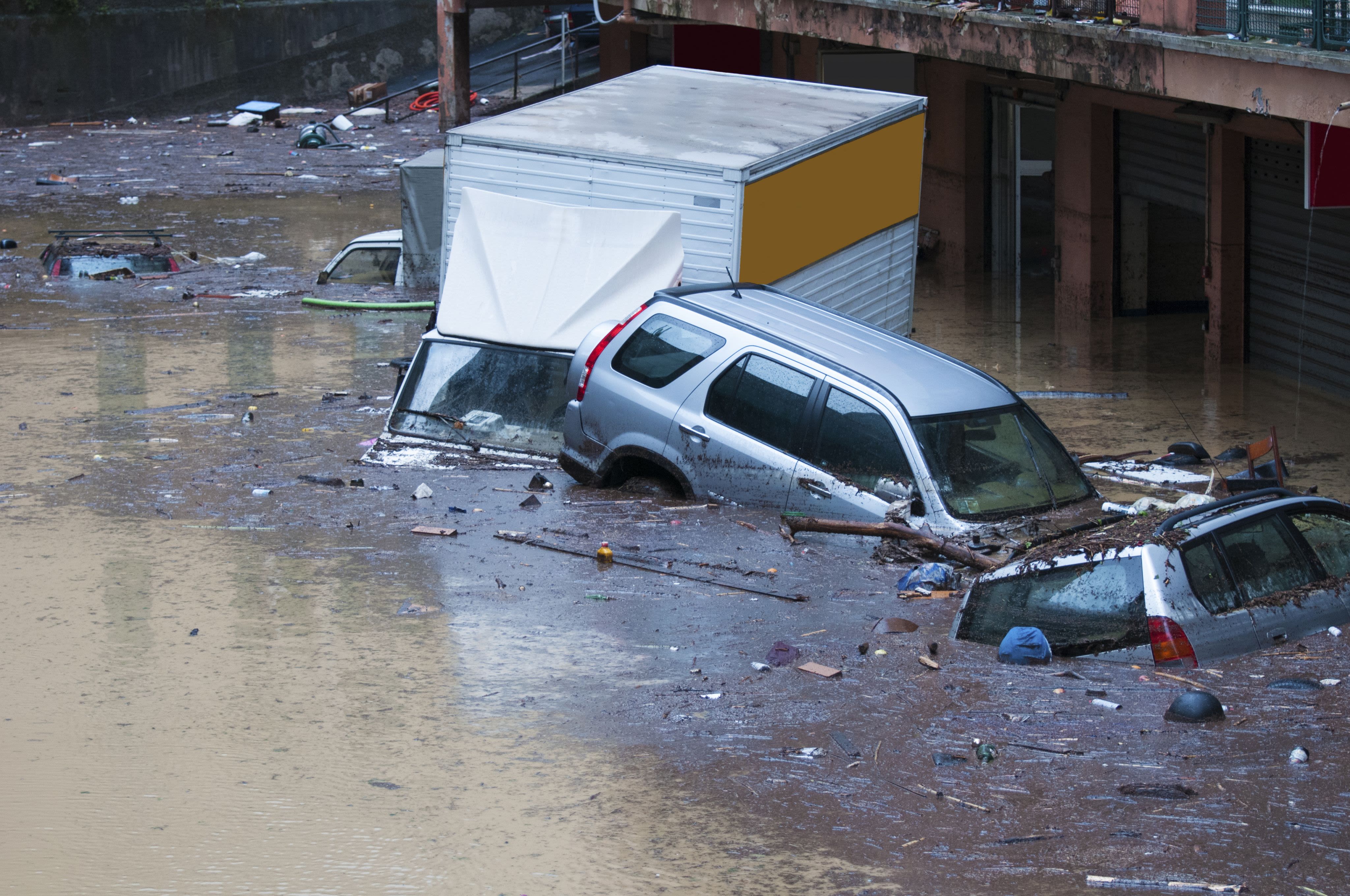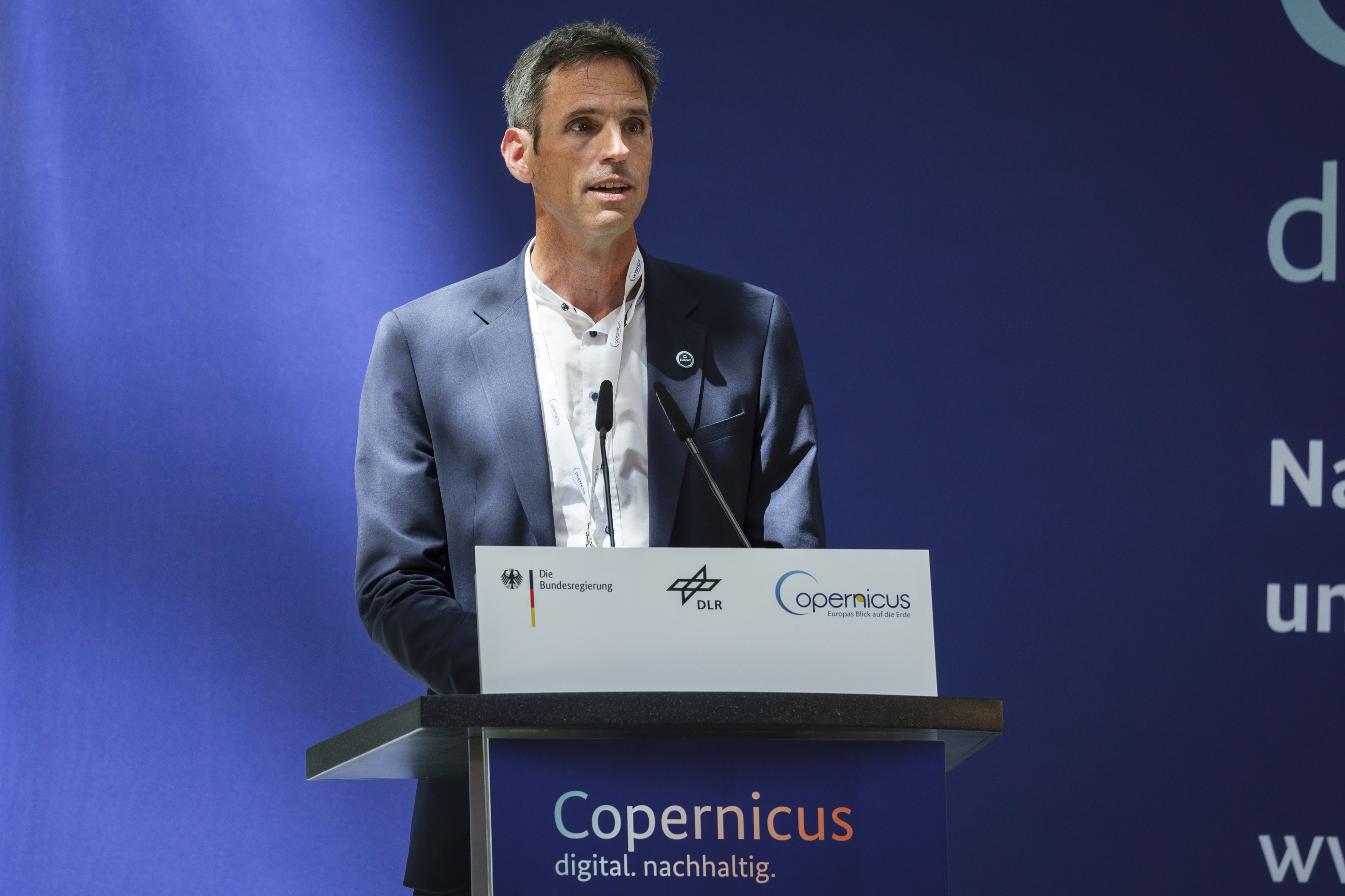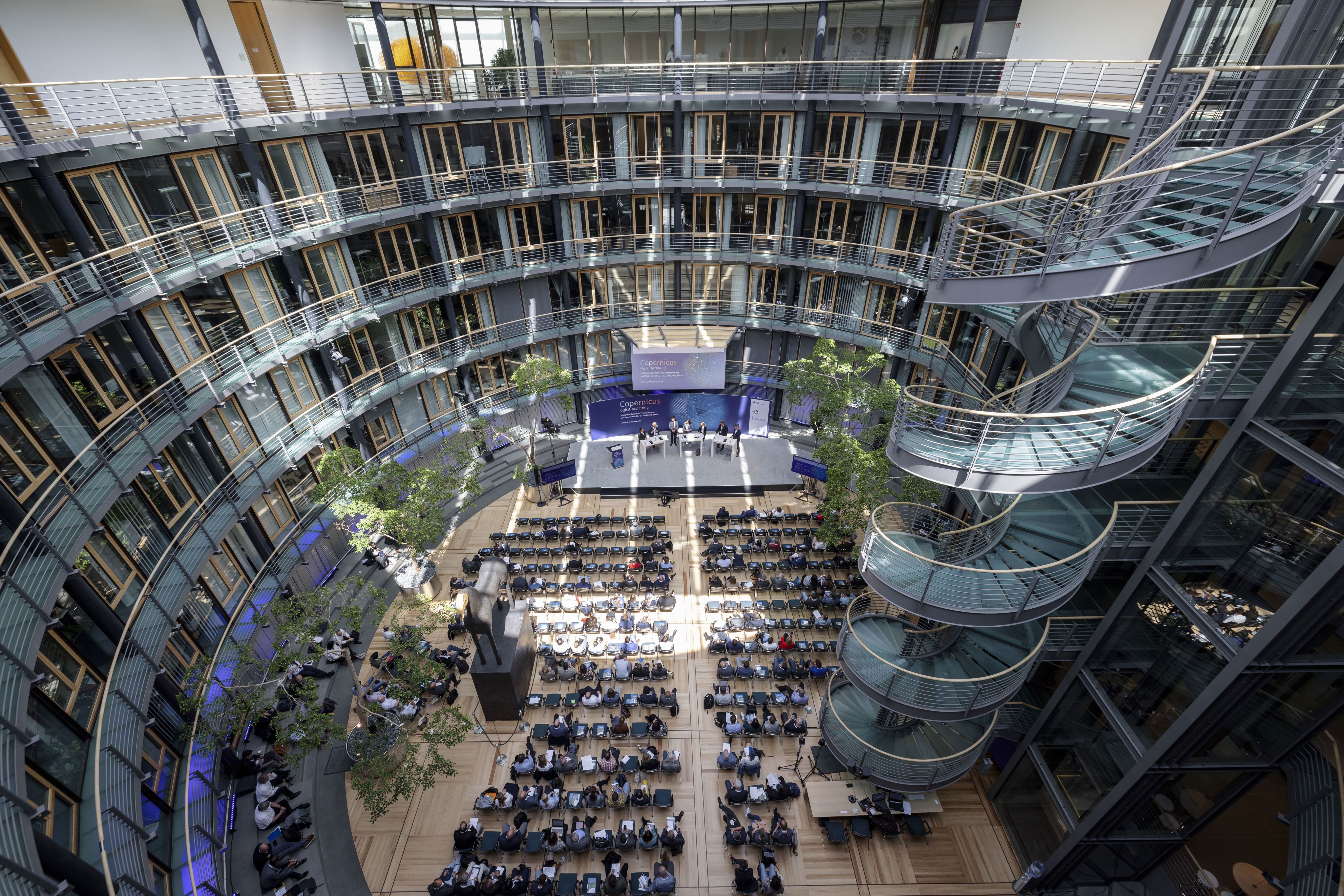How partners will shape Destination Earth's future

ECMWF - Destination Earth (DestinE) team seeks to engage with policymakers, meteorological and climate services, academia, industry and the leading European supercomputing centers. This wide partnership approach will ensure that the digital twins of Earth are built with the best technology available and serve the real needs of its users.
Leading on this key area of development are, Jörn Hoffmann, Application Partnership Lead and Thomas Geenen, Technology Partnership Lead for ECMWF, Destination Earth.
What are partnerships in the context of Destination Earth?
“In the Destination Earth context partnerships are cooperating together to create the technologies and demonstrate the real-life applications of what we want to achieve with the digital twins”, starts Jörn Hoffmann.
“Technological partnerships at Destination Earth are quite broad. They involve all the partners we work with at a technological level outside ECMWF, which is a lot. From high-performance computing centers to vendors and software engineers and developers,” says Thomas Geenen.
“ECMWF is seeking two main kinds of partnerships”, points Hoffmann. “The first one and most evident are the technological partnerships, in the fields of high-performance computing, artificial intelligence, and big-data handling.”
“We are working together with technology providers facing the same challenges that we do. Often this is not a matter of drawing up a contract, because they pursue the same objectives as we do. We are both benefiting from each other’s knowledge.”
Thomas Geenen confirms that there are synergic relationships being tied beyond commercial settlements.
“Partners use us, and we use them for the same end goal, but achieving different things along the way. This mutual benefit approach is key to achieve more than we would in a merely commercial relationship.”
Geenen quotes as an example how some partners are keen to contribute to Destination Earth with their technology and facilities to, in exchange, improve their visibility on their local scientific ecosystem.
The second big family of partnerships at Destination Earth are applications, with an almost unlimited scope; from disaster management, flood forecasting, renewable energy management services, agriculture...
“We have the capabilities that we’re building up with Destination Earth and there are institutions looking at exploiting those capabilities for their own applications” explains Hoffmann, and that’s where the joint interest comes from, that’s where we’re working together.”

Examples of sectors that could benefit from using ECMWF’s DestinE digital twins capabilities are:
- Renewable energy or food companies aiming to design and operate infrastructures that are more resilient to extreme weather events like windstorms, storm surges, floods, fires and pollution - both now and in the future;
- Scientists and researchers seeking to interact with sophisticated simulations, introduce their own models and data and generate unprecedented progress to our understanding of the Earth system and demonstrate responsible ways to manage resources;
- National or regional governments and policy makers needing to develop scenarios for adapting vital sectors like food, health, water management and renewable energies, anticipating climate change and extreme weather shifts.

Why are partnerships so important to Destination Earth?
“We are doing a lot of things that have never been done before. No one has operated Earth system models at the global scale at these fine resolutions. We’re trying to implement new elements of interactivity helping users' interface with the data and the services and ask questions in different ways than before. That’s difficult already.” Jörn Hoffmann, Application Partnership Lead for Destination Earth at ECMWF
According to Geenen the importance of technology partnerships at Destination Earth lays on the fact that it’s a very complicated landscape. “For instance, there are multiple high performance computing centers, multiple vendors, multiple architectures and everything is very diverse. It means you have to talk to them, understand where they’re going and what is being adopted and what’s being left aside.”
Adapting ECMWF’s well-established infrastructure and workflows to the heterogeneous and fast evolving high-performance computing environment is another aspect demanding to forge close and strong ties with the supercomputer centers involved and their technology providers.
Besides technology, partnerships at Destination Earth are important because “a clear objective of this ambitious project is to impact actual decisions and help solve actual problems on the ground,” states Hoffmann. “You cannot do that without having onboard the people who own and understand the problems, those who must provide the answers as part of their daily jobs. They must be involved and that’s where partnerships play their central role.”
This aspect is at the center of the co-design idea, one of the founding principles at Destination Earth.
“We’re not building some cool technology engine, put it out there and tell people to use it. We are building the digital twins by engaging from the start with those who actually need and will use the system.”
Hoffmann acknowledges this approach might pose challenges. “It will keep us on our toes to understand where we have to deliver and where we have to prioritize developments”.

Jörn Hoffmann speaks at the National Remote Sensing and Copernicus Forum in Berlin last June.
Jörn Hoffmann speaks at the National Remote Sensing and Copernicus Forum in Berlin last June.
Where are we now?
The Use Cases invitation to tender is open until the end of July. "By kicking off Destination Earth the European Commission has steered a lot of interest. There are already partners from environmental agencies, from larger research institutions looking at ways to work with us. Those are of course interesting partners because we have a common language where we can start speaking and we need to build from there.”
The Destination Earth – ECMWF team has also inaugurated a series of talks with national stakeholders starting in Germany.
Contacts are also ongoing with the Copernicus services, to make sure that DestinE adds value to their offer, and with the European High Performance Computing Joint Undertaking (EuroHPC JU) to grant access to more computing capacity.
Geenen details the agreements reached so far. Destination Earth has been granted access to 10% of the capacity of Cineca’s Leonardo supercomputer, and there are similar agreements with Finland’s CNC, to use Lumi supercomputer and the Barcelona Supercomputer Center (BSC) for the future Mare Nostrum 5 supercomputer.
“We have set up very good working relationships with the different HPC sites that we want to run on.” celebrates Geenen. “But also, we’ve established good working relationships with the technology providers of those sites.
“It’s important to establish a direct relationship with technology providers. That is quite informal, so you don’t have a contract setting the talks. You just establish this common understanding between you that in the end you have a shared goal.”
Destination Earth – ECMWF is also forging relationships with other digital twin projects such as the biodiversity digital twin Bio-DT, the geophysical extremes DT-Geo or the European digital twin of the Ocean DTO to share technology knowledge, common platforms or leverage technology components.
Who can join Destination Earth’s partnerships and how will it work?
“Initially partnership agreements will be restricted to a group of selected users or early adopters -and hopefully long terms users as well”, pinpoints Hoffmann, that will be working with Destination Earth’s digital twins.
“As early adopters, they will be helping us to define the system because their demands, their requirements will steer what the services deliver, and how they interface with end users”.
Hoffmann believes that the partnership possibilities are almost unlimited. The limitation will be the internal capacities to manage them. On the applications side the team is looking for a representative set of the many different potential uses of Destination Earth.

National Remote Sensing and Copernicus Forum in Berlin last June.
National Remote Sensing and Copernicus Forum in Berlin last June.
Looking for the perfect Destination Earth partnerships
“A good partner is someone who has a vision of how Destination Earth’s new capabilities –high resolution, interactivity... will make a very clear benefit to the end user application.”
Hoffmann details that DestinE team is looking for individuals or entities capable of building “that piece of software, that service that will take the twin capabilities, the data products, the services and the interfaces to the end user”.
“We are trying to engage with all types of partners.” Says Geenen. “Some of them are quite experimental, and some are more mature. For some aspects you need interaction with research, but for other applications you will need to approach industry and vendors .and we will be moving forward with all of them in parallel.”
Further reading:
ECMWF Destination Earth webpage
Shaping Europe's Digital Future
Destination Earth is a European Union funded initiative launched in 2022, with the aim to build a digital replica of the Earth system by 2030. The initiative is being jointly implemented by three entrusted entities: the European Centre for Medium-Range Weather Forecasts (ECMWF) responsible for the creation of the first two ‘digital twins’ and the ‘Digital Twin Engine’, the European Space Agency (ESA) responsible for building the ‘Core Service Platform’, and the European Organisation for the Exploitation of Meteorological Satellites (EUMETSAT), responsible for the creation of the ‘Data Lake’.
We acknowledge the EuroHPC Joint Undertaking for awarding this project strategic access to the EuroHPC supercomputers LUMI, hosted by CSC (Finland) and the LUMI consortium, Marenostrum5, hosted by BSC (Spain) Leonardo, hosted by Cineca (Italy) and MeluXina, hosted by LuxProvide (Luxembourg) through a EuroHPC Special Access call.
More information about Destination Earth is on the Destination Earth website and the EU Commission website.
For more information about ECMWF’s role visit ecmwf.int/DestinE
For any questions related to the role of ECMWF in Destination Earth, please use the following email links:
